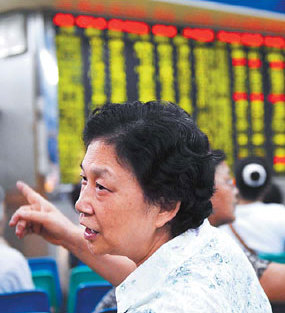The Chinese stock market is in the doldrums. Having tumbled 56 percent in 9 months since October, it's fast losing its primary function as a source of funds to finance the growth of the corporate sector. At a time of credit tightening to combat inflation, this impotence of the stock market has become all the more unpalatable.
A combination of factors, both domestic and foreign, have depressed share prices and

the daily average turnover in the stock market. The benchmark Shanghai Composite Index had recently sunk to the 2,600 level, down from the peak of 6,214 last October. The average daily turnover on the Shanghai Stock Exchange in May retreated to 98.6 billion yuan from 212.5 billion yuan in May 2007.
Such is the condition of the market that any mention of a new share issue by listed companies to raise additional capital is not only jeered by investors but, more seriously, causes sharp plunges in the index. Several major companies including Ping An of China have hastily withdrawn their plans to raise money when investors voted against such moves with a deluge of sell orders.
The problem has not escaped the government. Shang Fulin, chairman of market watchdog China Securities Regulatory Commission, has reportedly said "total efforts" must be made to preserve the stability of the capital market.
The People's Daily recently published an article recommending 10 government measures to revive the stock market. This included exercising stricter standards to regulate non-tradable share conversions, exerting further controls on large-scale new share issues, establish a timetable for the launch of index futures to stabilize prices, encourage stock repurchase by listed companies, especially by large State-owned enterprises, and setting up a special government fund to help shore up share prices. The publication of this commentary in the official paper has been widely seen as an indication that the authorities are gearing up for direct intervention to stabilize the stock market.
Economists and stock analysts say there are numerous fiscal, monetary and administrative tools available to the government to revive market confidence.